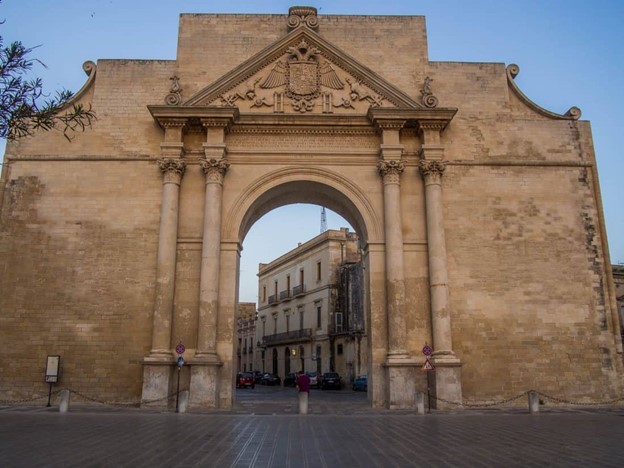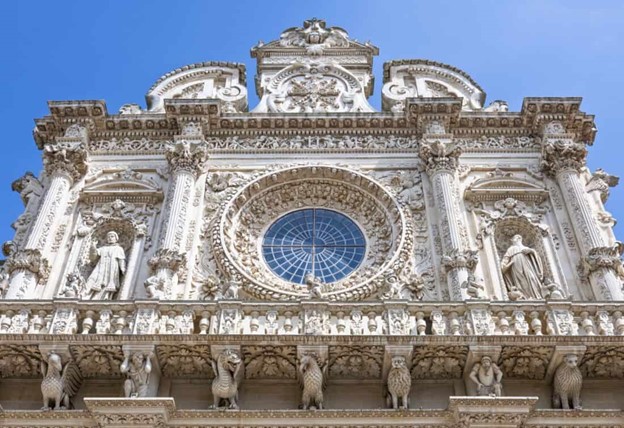Lecce is famous with the best-knowns sights in Italy that it would take weeks to see everything in it, also it is one of Europe’s most popular cities. It has many breathtaking views and tourist attractions from museums to churches and palaces.
The following are some suggestions of places to visit while you are in Lecce, Italy:
Roman Amphitheatre in Piazza Sant’Oronzo
The highlight is the large Roman amphitheatre which once seated 14,000 spectators on its two tiers, although only the lower tier remains. Sometimes concerts still take place here.
In the piazza, you can also see the column of Sant’Oronzo and an unusual 20-meter-high bronze clock, the Orologio Delle Meraviglie, created in 1955 on the wall of the Banco di Napoli.

Lecce Cathedral
Lecce’s Cathedral is on one of the most beautiful squares in Lecce, the Piazza del Duomo.
Piazza del Duomo has a more intimate feel and is enclosed by ornate buildings including the bishop’s residence and seminary.
The Cathedral was originally built in 1144 and was rebuilt in the 17th century by architect Giuseppe Zimbalo in the decorative baroque style that now characterises the city.

Lecce’s Portas
The three remaining city gates of the previously walled city are useful landmarks for navigating the city, and all are decorative and worth seeing.
Once you pass through the gates, you leave the historic centre behind for the modern part of the city which is less attractive, but it does have some good restaurants and shops.
The main city gate is Porta Napoli built in 1548 for a state visit from Charles V and modelled on a Roman triumphal arch. Just outside the arch is the obelisk and beyond this is the university area.

Basilica di Santa Croce
Lecce’s most extravagant baroque church is Santa Croce, also designed by Zimbalo. If you only visit one church in Lecce, make it this one.
The facade features intricate carved figures and a rosette window, and inside are ornate columns and a decorative ceiling, next to Santa Croce is another Zimbalo creation, the Palazzo dei Celestini, now the seat of the local government.
After admiring the exterior, you can walk through the courtyard and out the archway to reach Lecce’s park, just beyond the church and palace is a lovely little street full of wine bars—perfect for a light lunch or aperitivo.


